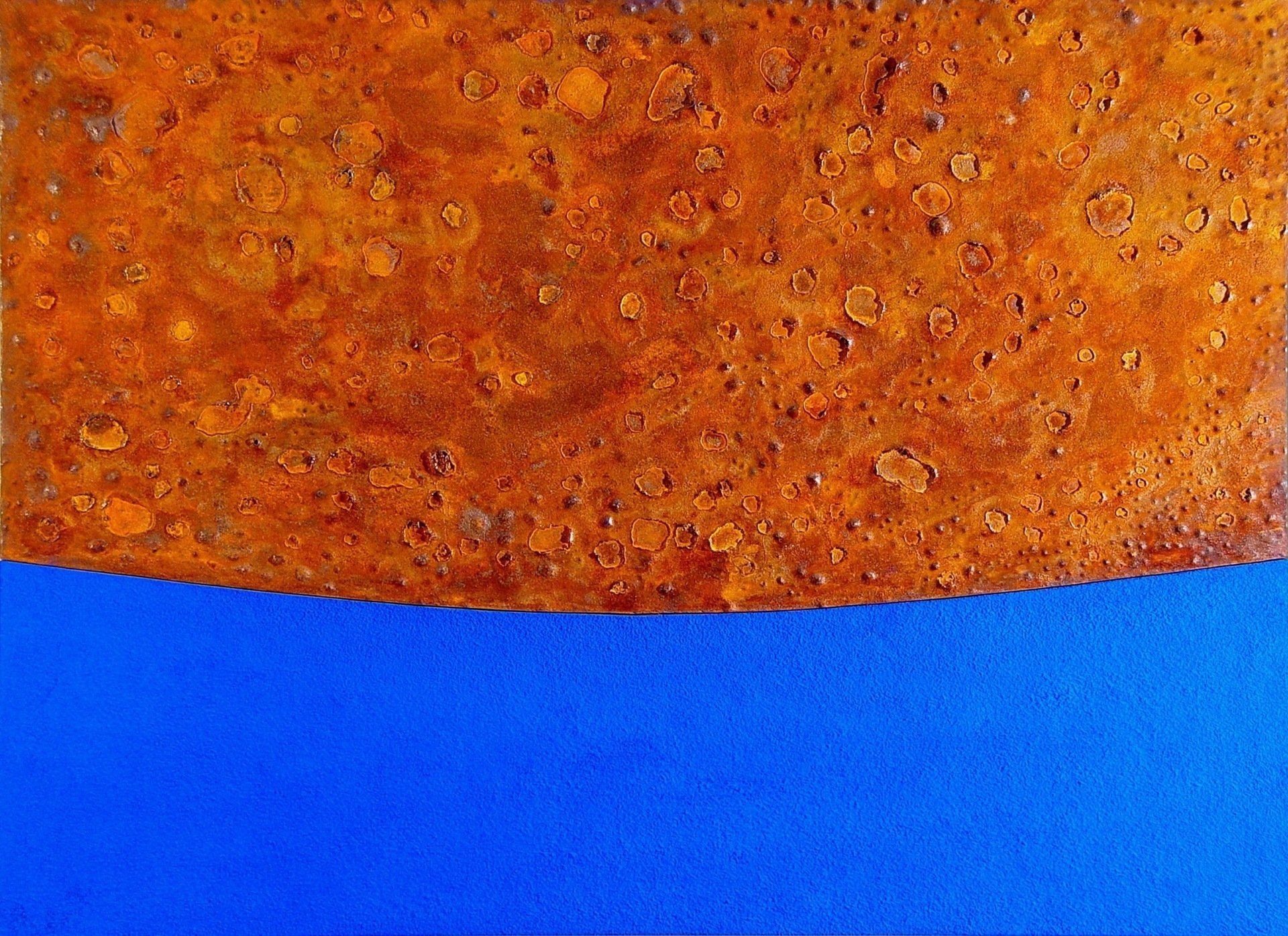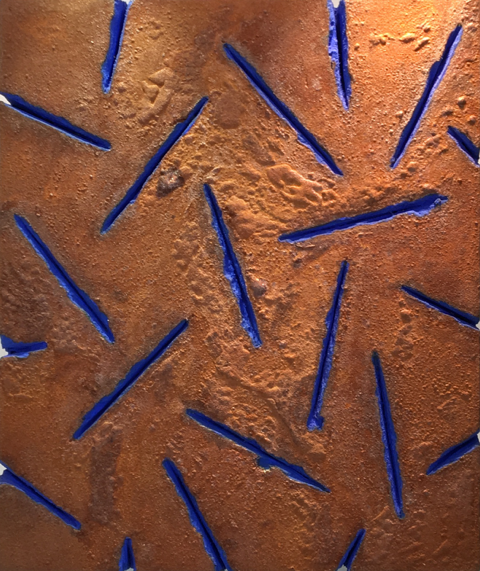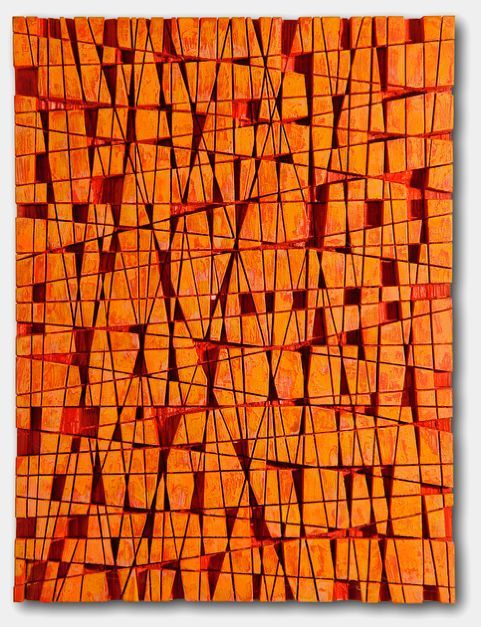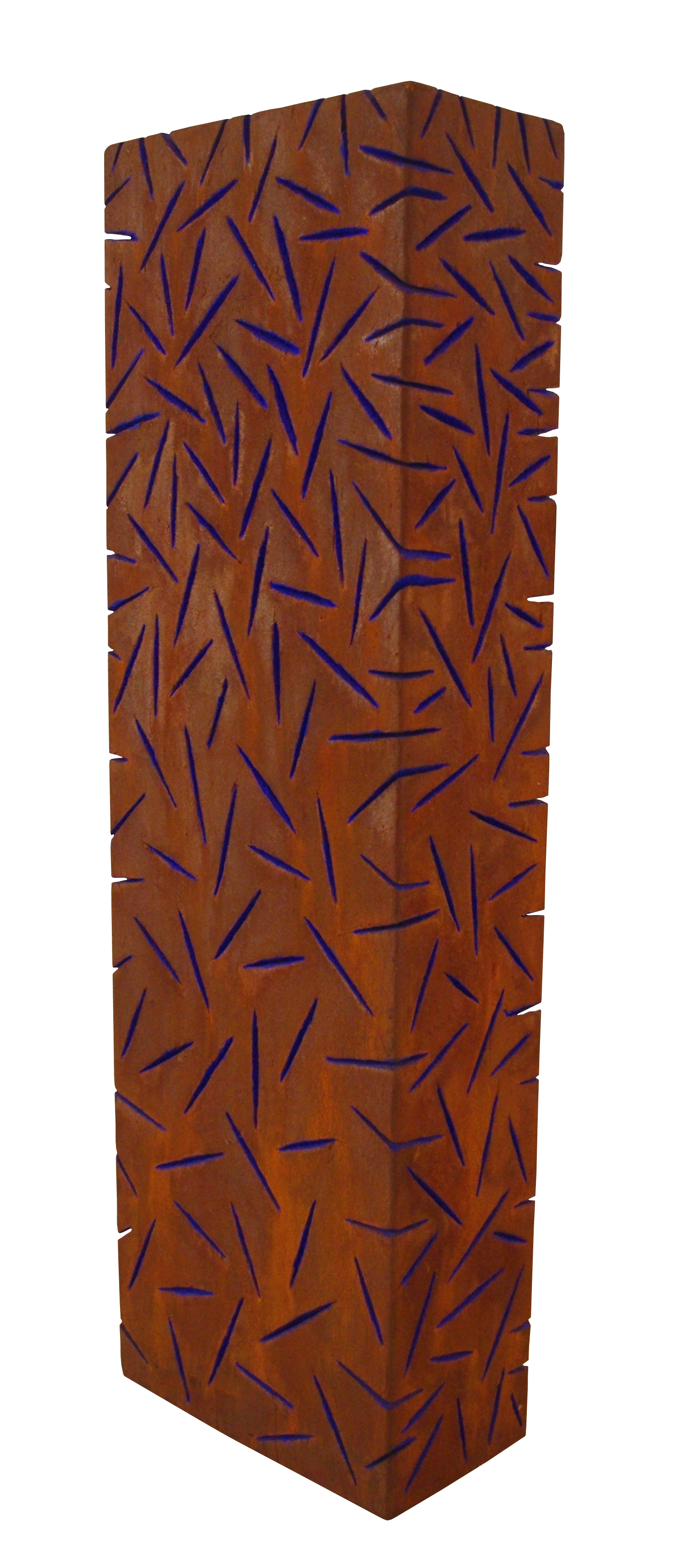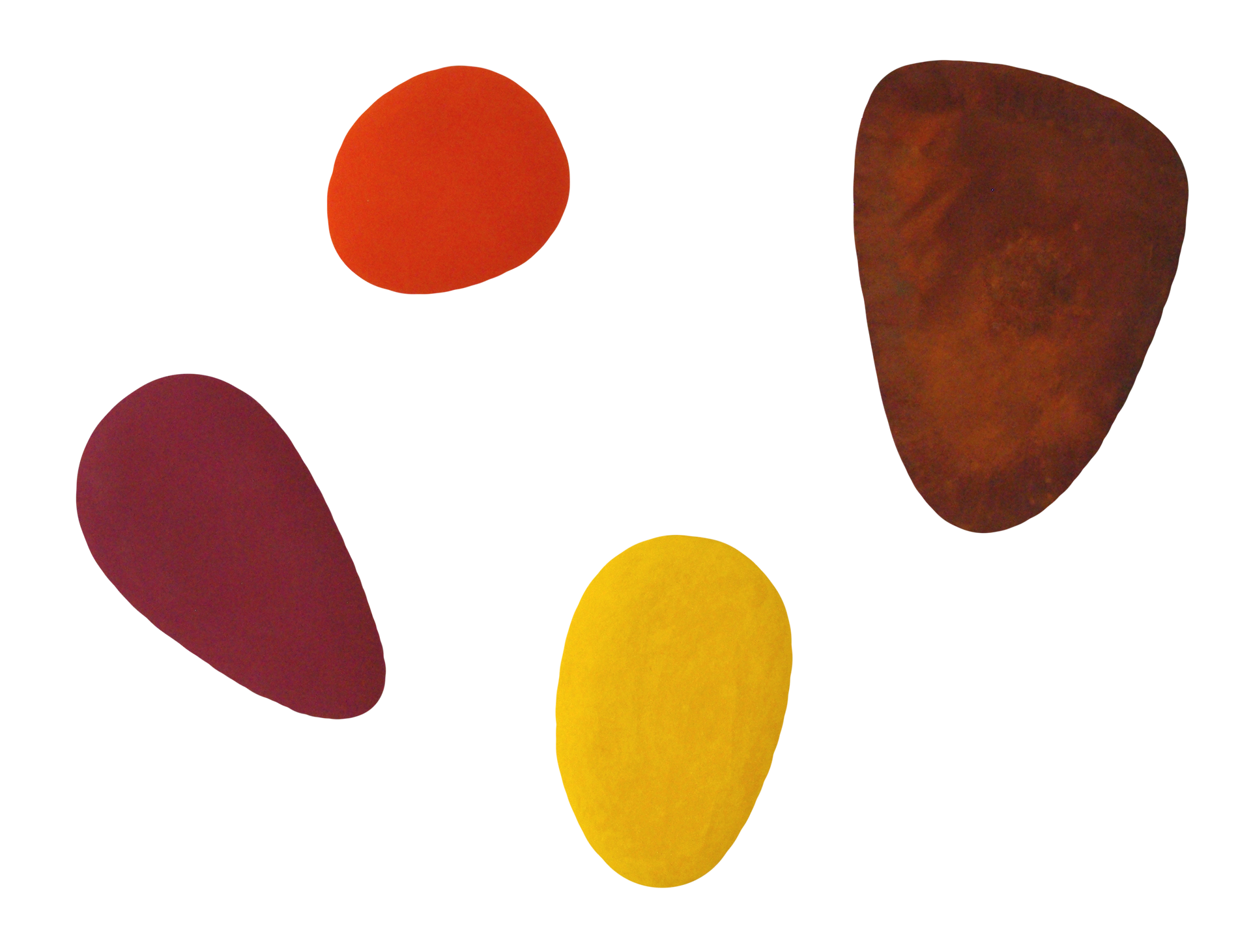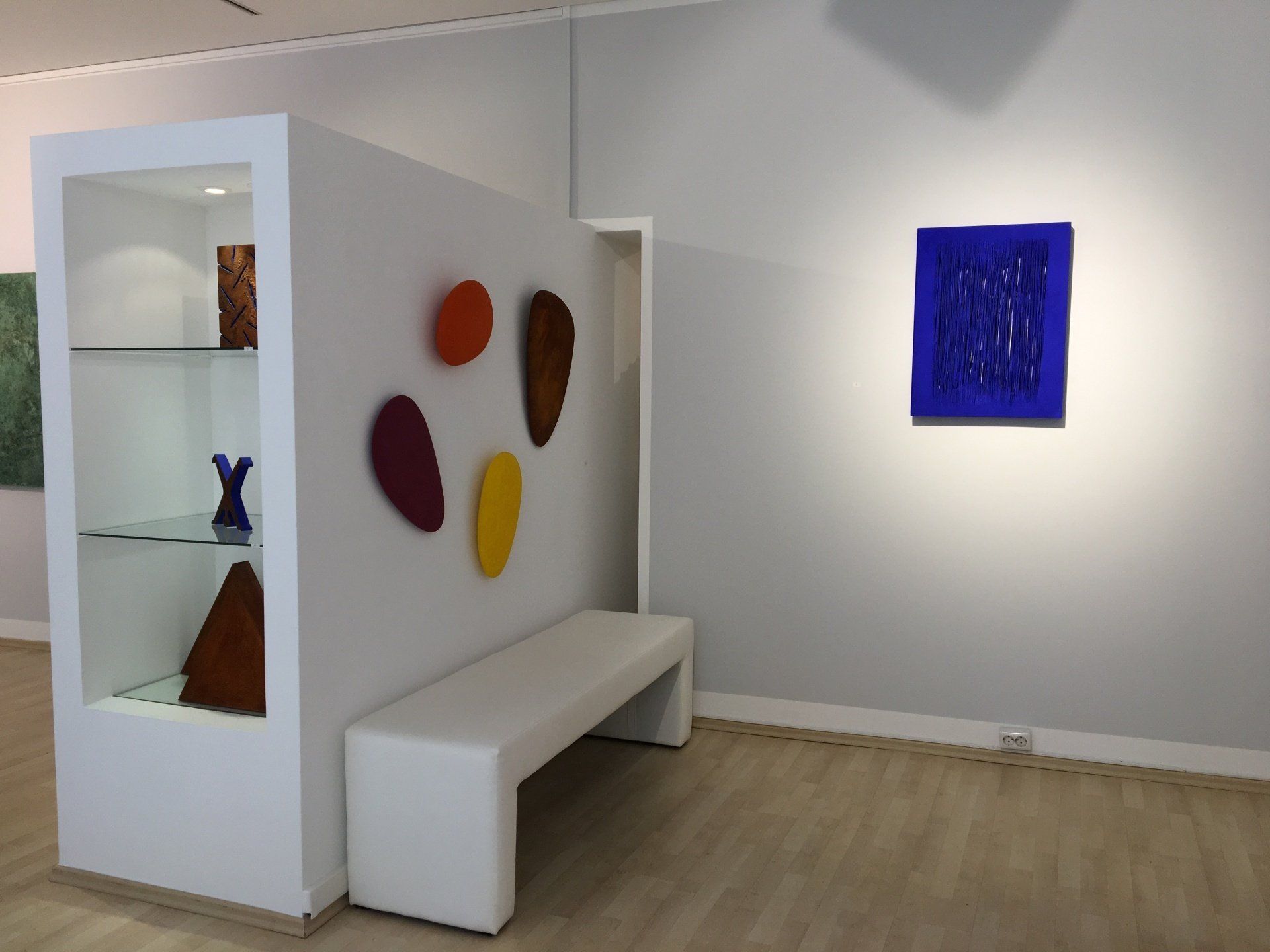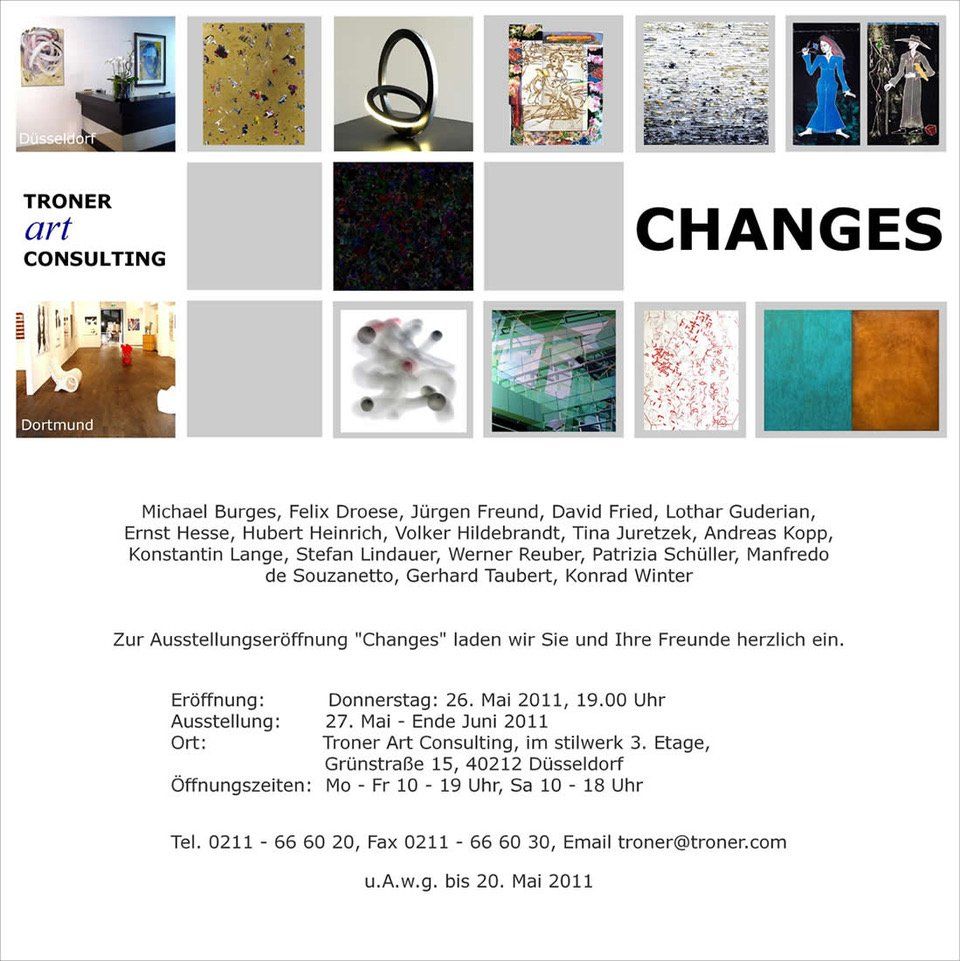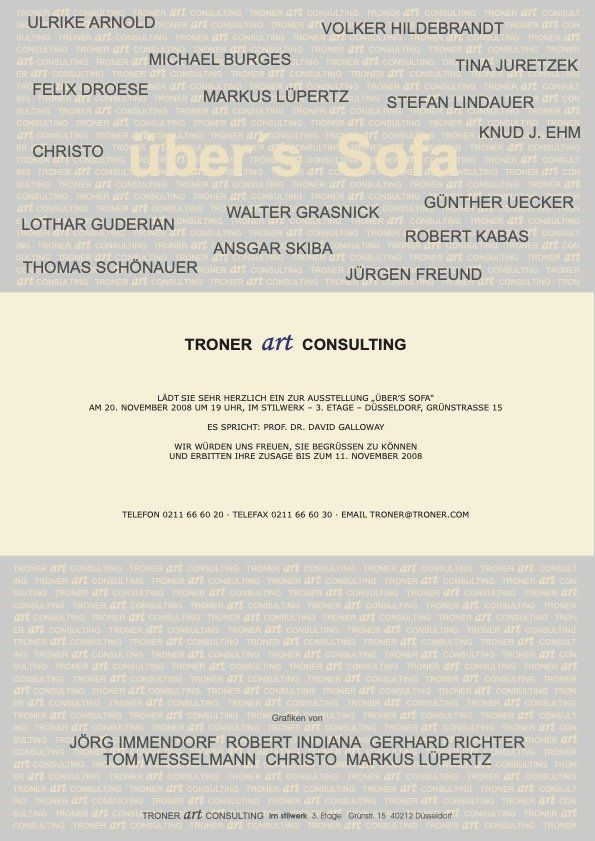JÜRGEN FREUND

Rust collages / Color combinations
Born 1949 in Koblenz, died 2007 in Düsseldorf
After internships in all graphic professions, he studied from 1972 - 1977 with Prof. Sackenheim, Kunstakademie Düsseldorf, graduating as a master student and completed a degree in photography at the Folkwangschule Essen.
In 1978 he received a scholarship from the Akademie der Künste Berlin for the Villa Serpentara, Olevano/Romano, Italy.
Jürgen Freund came to the subject of rust in the mid-1970s through photography. During his photographic training at the Folkwangschule in Essen, he almost exclusively photographed surface structures. He photographed walls and rust again and again. So why not simply produce rust yourself - create three-dimensional works instead of smooth photographs?
"Rust as a color and also as a material has warmth," he emphasized again and again.
However, the works have no more to do with rust than the paintings of other artists who work with oil or acrylic. Most of his "paintings", as I would like to call them, are made of oxidized iron filings, but this is no more than the material that serves the technique. The artist understood the color as the imperishable and the rust as a symbol for the passing as the constant change of things.
Jürgen Freund reinterpreted the legacy of the 1960s, such as Informel, Zero and Konkret, and thus developed his own individual style. He chemically staged the rusting process as a rotting process in contrast to the sculptures and paintings of Duchamp or Schwitters, who used pre-aged, rusted found objects in their works. Jürgen Freund's rusting process thus becomes a design principle that is subject neither to pure chance nor to time, but solely to the artist's creative option.
His works are calm in their view, sensitive in their color nuances.
The works in this exhibition are also often combinations of color and rust in irregular geometric outlines. By combining rust reliefs with monochrome color surfaces, Freund's design principle unfolds in an innovative further development of existing, non-objective art. In his works, he addresses both the symbolic contrast between the morbid appearance of decay and the highly refined color surfaces, which could stand for an almost exaggerated, artificially created homogeneity.
His works create a spatial plasticity which, through the use of the color ultramarine blue, leads to a separation of the pictorial ground and the formal body. The monochrome points to a cosmic expanse.
In other combinations, on the other hand, the juxtaposition of rust and red results in densification.
This emphasizes the value of the pictorial body, which refers exclusively to itself in the introversion.
If one loses oneself in purely spiritual and macro- and microcosmic dimensions in Freund's color combinations, the bizarre beauty of the rust surfaces symbolizes the deep rootedness of man in the transience of material substance.
Selected Works
Exhibitions



